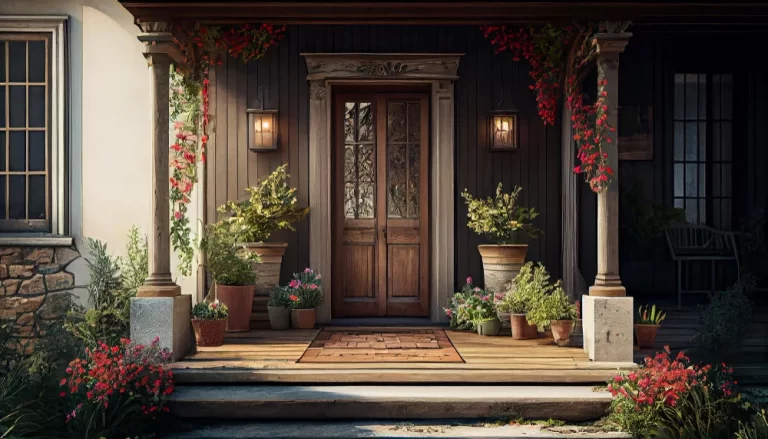When it comes to choosing the perfect material for your countertops, flooring, or other architectural elements, the decision between marble and granite often tops the list. Both of these natural stones offer a timeless and elegant aesthetic, but they also come with distinct characteristics and considerations. In this comprehensive guide, we’ll delve into the key factors that can help you make an informed choice between marble and granite for your project.
1. Origin and Composition
Marble and granite have vastly different origins and compositions. Marble is a metamorphic rock formed from limestone, subjected to immense heat and pressure over time. This process results in a stone with a characteristic veined appearance and a softer, more porous nature. In contrast, granite is an igneous rock created from the slow crystallization of molten magma deep within the Earth’s crust. It is denser and harder than marble, featuring a speckled or granular texture.
2. Durability
One of the primary considerations when choosing between marble and granite is durability. Granite is known for its exceptional hardness and resistance to scratches and heat. It’s a superb choice for high-traffic areas like kitchens, where cutting and cooking activities are common. Marble, on the other hand, is softer and more susceptible to scratches and stains. Therefore, it’s better suited for less demanding spaces such as bathrooms and fireplace surrounds.
3. Aesthetics
Both marble and granite offer stunning visual appeal, but they have distinct aesthetics. Marble’s smooth, veined surface exudes a classic, luxurious look that has been adored for centuries. It’s often chosen for its timeless elegance and ability to create a sense of opulence. Granite, with its unique speckled patterns and a wide range of color options, offers a more contemporary and diverse appearance. The choice between the two should align with your design preferences and the overall style of your space.
4. Maintenance
Maintenance requirements can greatly influence your decision. Marble demands more care, as it’s susceptible to etching from acidic substances like lemon juice or vinegar and can stain if not sealed properly. Granite is less porous and generally more forgiving in terms of staining and etching. It’s essential to regularly seal both materials to protect them from potential harm, but granite tends to be more forgiving in this regard.
5. Cost
Cost is a significant factor in any construction or renovation project. In general, granite is more budget-friendly than marble. Marble’s exquisite appearance and the labour-intensive process of extracting and refining it contribute to its higher price tag. Granite offers a cost-effective alternative while still delivering a luxurious and visually appealing result.
6. Versatility
Consider the intended use of the material in your project. Marble, with its inherent beauty and elegance, is often chosen for interior applications like countertops, flooring, and wall cladding. It can instantly elevate the aesthetic of any space. Granite is versatile and can be used both indoors and outdoors, making it an excellent choice for kitchen countertops, bathroom vanities, outdoor kitchen tops, and even exterior facades.
7. Color and Pattern Options
Both marble and granite offer an array of colors and patterns to suit various design styles. Marble is known for its classic white and gray variations, as well as options with warmer tones like beige and brown. Granite, on the other hand, offers an even broader spectrum of colors, from vibrant blues and greens to subdued blacks and browns. The choice of color and pattern should harmonize with your design scheme and personal preferences.
8. Environmental Impact
For those concerned about the environmental impact of their choices, granite may have a slight edge. While both materials are natural stones, the mining and transportation processes for marble can be more energy-intensive due to its often remote quarry locations. However, both materials are considered sustainable choices when compared to synthetic alternatives.
9. Resale Value
Consider the long-term value of your investment. Both marble and granite can enhance the resale value of your property due to their durability and aesthetic appeal. Marble, with its timeless charm, may have a slight advantage in this regard, as it continues to be associated with luxury and elegance.
10. Personal Preferences and Lifestyle
Ultimately, the decision between marble and granite should align with your personal preferences and lifestyle. If you prioritize aesthetics and are willing to invest time in maintenance, marble might be the perfect choice for your home. On the other hand, if you seek durability and lower maintenance, granite could be the more practical option.
In conclusion, choosing between marble and granite involves a careful consideration of factors such as durability, aesthetics, maintenance, cost, versatility, color options, environmental impact, resale value, and personal preferences. Each material has its own unique characteristics and advantages, so it’s essential to weigh these factors against your specific needs and priorities. By doing so, you can confidently select the ideal material to enhance the beauty and functionality of your space.




